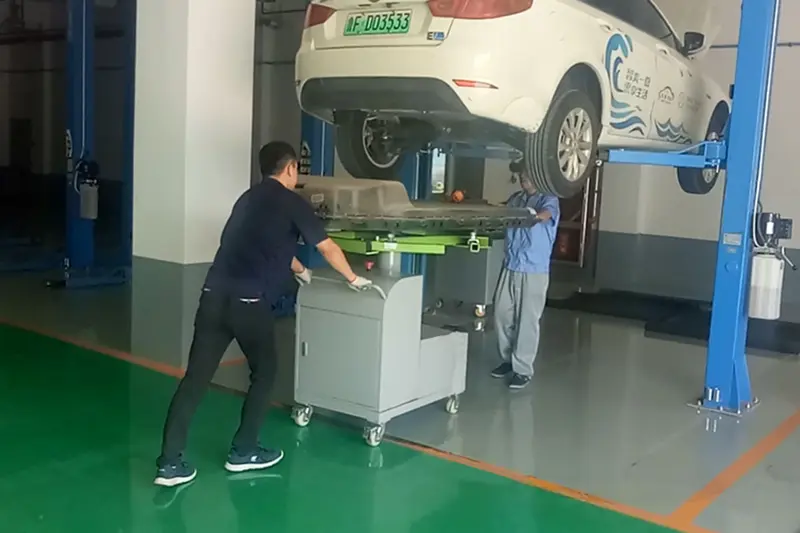****
The alternating current (AC) series is a crucial topic in electrical engineering, playing a significant role in our daily lives and technological advancement. Understanding the AC series is essential for professionals in the field, students pursuing electrical engineering, and anyone interested in the workings of modern electrical systems. This article aims to delve into the fundamentals of the AC series, explore its applications, and discuss future innovations that could propel this technology forward.
What is an AC Series?
The term “AC series” primarily refers to a sequence of alternating current signals or waveforms characterized by periodic changes in voltage and current direction. Unlike direct current (DC), which flows in a single direction, AC alternates its direction periodically, typically in a sinusoidal manner. This unique characteristic allows for efficient transmission over long distances, making AC a preferred choice for power generation and distribution.
The Basics of Alternating Current
AC is generated by various sources, including generators and inverters. Its frequency, measured in hertz (Hz), indicates how many cycles occur per second. For example, most household electrical systems operate at a frequency of 50 Hz or 60 Hz, depending on geographical location. The use of transformers plays a vital role in the AC series, enabling the voltage to be stepped up or down, which optimizes power transmission and a safe distribution system.
In an AC circuit, the voltage and current waveforms can be represented using complex numbers in a plot called the phasor diagram. This mathematical representation simplifies the calculations involved in analyzing AC circuits, enabling engineers to determine related electrical parameters such as impedance, power factor, and resonance.
Applications of AC Series
The applications of the AC series are vast and diverse, influencing numerous sectors worldwide. Here are some key areas where AC series technology is pivotal:
1. **Power Distribution**: AC power is generated at power plants and transmitted over long distances to substations. It is then distributed to homes and businesses, providing electricity for lighting, heating, and powering appliances.
2. **Electronics and Appliances**: Majority of household and industrial appliances, such as refrigerators, air conditioners, and motors, utilize AC. This is due to its ease of transformation and capacity to supply energy for complex operations.

Exploring the Fascinating World of AC Series: Understanding Its Concepts, Applications, and Future Innovations in Electrical Engineering
3. **Telecommunications**: AC signals are also used in telecommunications, especially in modulation techniques where data is transmitted over AC carriers. This includes radio waves and other wireless communication forms.
4. **Lighting**: The AC series plays a crucial role in powering various lighting systems, including incandescent, fluorescent, and LED lights. Each of these technologies utilizes AC in different ways to optimize energy consumption.
5. **Renewable Energy Integration**: With the rise of renewable energy technologies, AC series plays a significant role in integrating solar panels and wind turbines into the existing electrical grid. The conversion of the DC generated by these sources into AC is vital for effective distribution.

Exploring the Fascinating World of AC Series: Understanding Its Concepts, Applications, and Future Innovations in Electrical Engineering
Challenges and Innovations in AC Series
While the AC series has numerous advantages, it is not without challenges. Issues such as harmonics, electrical losses due to resistance, and phase differences can complicate AC circuit analysis and performance. Engineers and researchers are continually working to develop innovative solutions to address these challenges.
One area of innovation is the implementation of smart grids that utilize advanced sensors and communication technologies to optimize AC power distribution. By analyzing data in real time, these systems can enhance efficiency, reduce outages, and improve the reliability of electrical supply.
Another exciting innovation is the development of new materials for transformers and transmission lines. By using high-temperature superconductors and advanced composite materials, engineers aim to reduce losses during power transmission, allowing for more efficient operation of the AC series.
Moreover, as the world leans towards sustainable energy sources, integrating AC systems with energy storage technologies like batteries and flywheels will become increasingly vital. These advancements offer promising solutions to enable a stable and continuous supply of energy, even when renewable generation fluctuates.

Exploring the Fascinating World of AC Series: Understanding Its Concepts, Applications, and Future Innovations in Electrical Engineering
Conclusion
The AC series is an overarching concept that underpins much of the modern electrical engineering landscape. Its principles and applications are integral to everyday life and ongoing technological advancements. As we look to the future, continuous innovation and research in the AC series are essential to tackle existing challenges and enable a more efficient, reliable, and sustainable electrical grid. Understanding and embracing the AC series’s potential will be critical for future generations of engineers, innovators, and environmentalists striving for a better world through technology.quick car jack lift
